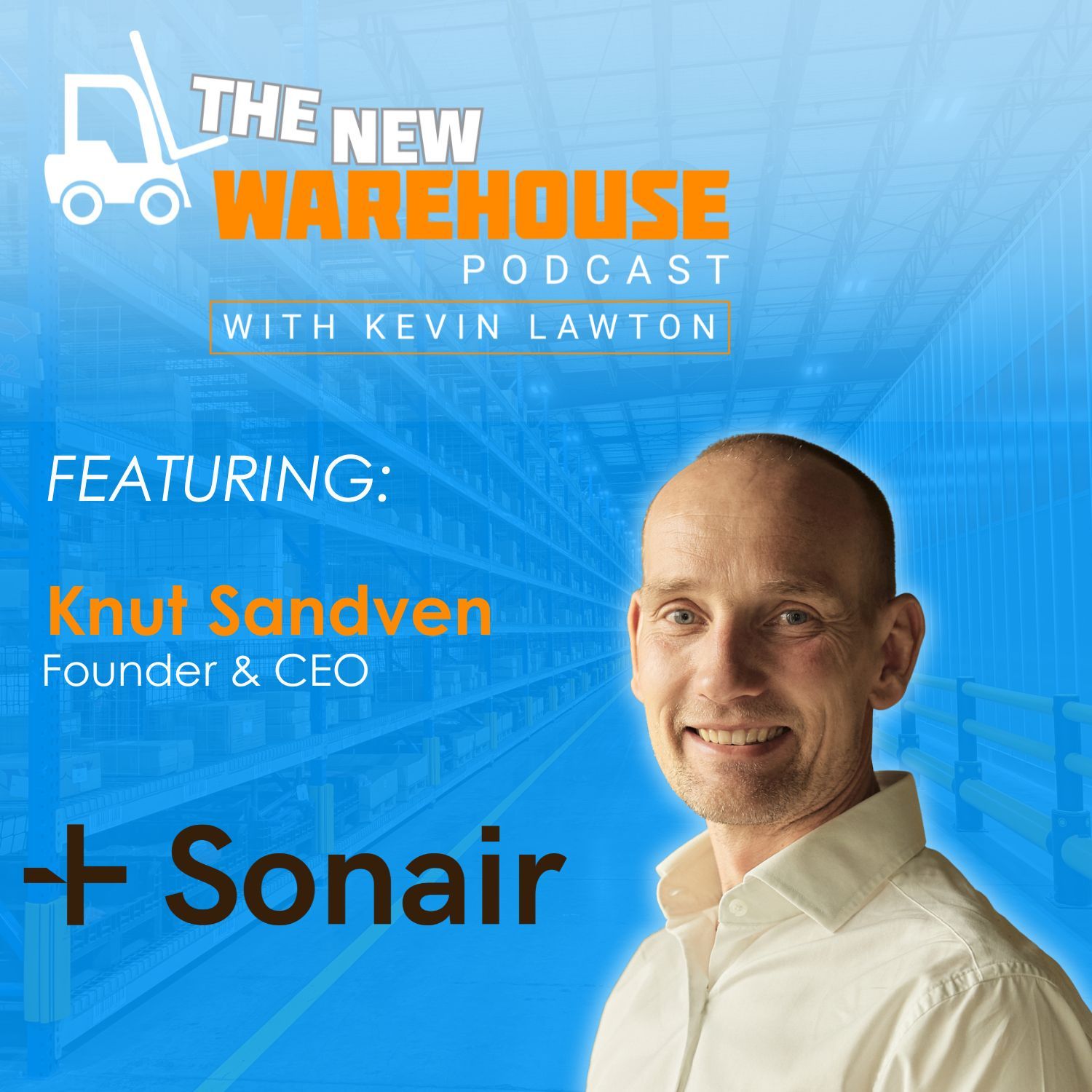
610: Sonair is Giving Robots a New Way to See
In this episode of The New Warehouse Podcast, Kevin chats with Knut Sandven. Sandven is the founder and CEO of Sonair, a Norway-based startup bringing new depth to robotic vision. With a background in ultrasonic sensing and two previous startups under his belt, Knut shares how Sonair is enabling warehouse robots to “see” with ultrasonic depth sensors that work in 3D. These sensors allow autonomous mobile robots (AMRs) and robotic arms to detect and navigate around various types of objects, including transparent, reflective, and oddly shaped ones.
Sonair’s sensors are built on a medical-grade beamforming technique, allowing them to detect soft, hard, or glass objects with high reliability. The sensors are not only designed to enhance safety but are also being launched in safety-certified versions, helping robotics OEMs meet compliance standards more efficiently. For warehouses looking to deploy automation without reconfiguring their entire layout, Sonair’s technology could be a game changer.
Reimagining Depth Perception with Ultrasound
Most AMRs today rely on a combination of 2D lidars and cameras to perceive their environment. While this setup works in basic conditions, it falls short in real-world warehouses filled with glass, shadows, shiny surfaces, and unexpected obstacles. As Knut explains, “The main disadvantage with lidar is that it’s 2D… it does not see the full body of a person.”
Sonair’s 3D ultrasonic depth sensor steps in to solve this problem. Based on MEMS (Micro-Electro-Mechanical Systems) technology and beamforming techniques used in medical ultrasound, Sonair delivers reliable full 3D coverage—horizontal, vertical, and everything in between. The result? Robots can detect whether someone is reaching, bending, or placing an object in their path, even if it’s a transparent or highly reflective surface. “Everything is visible in ultrasound,” Knut notes. “That’s one of the advantages.”
Lowering the Barriers to Warehouse Automation
For warehouse operators evaluating robotics solutions, the prospect of having to redesign layouts or halt operations can be a deal-breaker. That’s where Sonair’s tech helps simplify adoption.
Knut stresses that “the goal here is really to not have to design your warehouse or the environment to the robot, but to use robots along with people in a messy environment.” By improving visibility and safety, Sonair enables robots to work seamlessly in existing spaces—no reconstruction required.
In addition, Knut highlights the affordability factor: “The cost of current, safety-certified lidars is very high. We are taking that significantly down.” With Sonair’s sensors being safety-certified and plug-and-play compatible, robotics OEMs gain both cost-efficiency and quicker paths to deployment.
The Future of Safety, Humanoids, and Service Robots
Beyond AMRs, Sonair’s technology enables robotic arms and humanoids to operate freely without cages or barriers. Their sensors can define custom safety zones in 3D, slowing or stopping robot motion if a human enters a designated area. “You can define the safety zones in 3D. I think we are the only company having that capability,” Knut shares.
As robots continue to replace monotonous and physically demanding roles, the need for reliable safety systems grows. Knut believes simplifying these systems is key to accelerating adoption: “Make safety easy. That’s where we need to go.”
Looking ahead, Sonair sees big opportunities in service robotics and humanoid applications. Whether it’s delivering food in a restaurant or automating logistics workflows, Knut’s vision is clear: enable safer, smarter interactions between humans and machines, without barriers.
Key Takeaways from Sonair
- Sonair’s ultrasonic 3D depth sensor offers full-field visibility, even detecting glass and shiny objects that cameras and lidars often miss.
- Built using MEMS and medical-grade beamforming, these sensors enable robots to navigate complex environments and operate safely in the presence of people.
- Sonair’s technology lowers the cost of safety-certified sensors while simplifying integration for robotics OEMs.
- Safety zones can be configured in 3D for robotic arms and machinery, eliminating the need for physical barriers or cages.
- By making safety easy and affordable, Sonair helps reduce barriers to automation adoption, especially in older, hard-to-retrofit warehouses.
Listen to the episode below and leave your thoughts in the comments.
Guest Information
For more information on Sonair, click here.
To connect with Knut on LinkedIn, click here.
For more warehousing solutions like Sonair, check out the podcasts below.
605: Trailer Loading with Modular Simplicity from Slip Robotics
MHI Industry Group Series: Shaping the Future of Robotics in Warehousing
569: Autonomous Drone Inventory Management and More with Corvus Robotics
